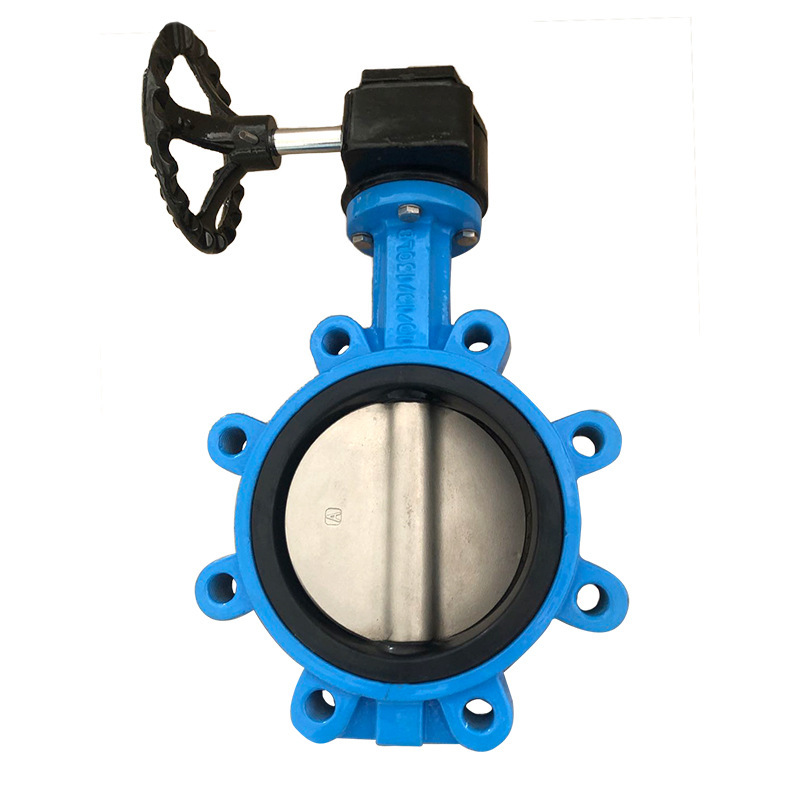يكمن الاختلاف بين صمامات الفراشة ذات العروة والحواف في آليات وتطبيقات التركيب الخاصة بها.
تتميز صمامات الفراشة من نوع العروة بإدخالات أو عروات ملولبة على كلا الجانبين لسهولة التركيب والإزالة في الأنظمة التي تتطلب صيانة متكررة.
من ناحية أخرى، يتم تثبيت صمامات الفراشة ذات الحواف على خطوط الأنابيب عبر الشفاه، مما يوفر اتصالاً أكثر قوة ومناسبًا لتطبيقات الضغط العالي.
إن فهم هذه الاختلافات يتيح اتخاذ قرارات مستنيرة عند اختيار الصمامات لأنظمة أنابيب صناعية أو تجارية محددة.
ما هو استخدام صمام الفراشة من نوع العروة؟
يتم استخدام صمام الفراشة من نوع العروة بشكل أساسي في التطبيقات التي تكون فيها المساحة والوزن محدودين، حيث يمكن تركيبه دون استخدام مجموعة كاملة من الحواف.
يتم استخدامه بشكل شائع في صناعات مثل التدفئة والتهوية وتكييف الهواء (HVAC)، ومعالجة المياه، والمعالجة الكيميائية لتنظيم أو عزل التدفق في خطوط الأنابيب.
تتيح العروات الموجودة على جسم الصمام سهولة التركيب والإزالة دون تعطيل نظام الأنابيب بأكمله.
ما هي الوظيفة الرئيسية لصمام فراشة شفة؟
تتمثل الوظيفة الرئيسية لصمام الفراشة ذو الحواف في تنظيم أو عزل تدفق السوائل في خطوط الأنابيب باستخدام قرص مثبت على عمود دوار.
يدور هذا القرص بشكل عمودي على اتجاه التدفق، مما يسمح بالتحكم الدقيق في معدلات التدفق ويوفر إمكانات إيقاف فعالة عند إغلاقه بالكامل.
صمام الفراشة ذو الحواف مقابل نوع العروة: الاختلافات في الاستخدام أو مبادئ العمل
تعد صمامات الفراشة ذات الحواف وصمامات الفراشة من نوع العروة نوعين شائعين يستخدمان في التطبيقات الصناعية، ولكل منهما خصائص وتطبيقات مميزة.
صمام الفراشة ذات الحواف
تم تصميم صمامات الفراشة ذات الحواف مع حواف على كلا الجانبين، مما يسمح بربطها مباشرة بالأنابيب أو المعدات ذات الحواف.
يتم استخدامها عادةً في التطبيقات التي تسمح بها المساحة وحيث يلزم وجود اتصال آمن مانع للتسرب.
تعتبر صمامات الفراشة ذات الحواف مثالية لتطبيقات الضغط العالي نظرًا لبنيتها القوية وقدرتها على تحمل القوى الكبيرة.
صمام الفراشة من نوع العروة
من ناحية أخرى، تتميز صمامات الفراشة من نوع العروة بوجود عروات أو آذان على جسم الصمام.
تسمح هذه العروات بربط الصمام بين شفتين دون الحاجة إلى أجهزة إضافية.
تُستخدم صمامات الفراشة من النوع العروي بشكل شائع في التطبيقات التي تتطلب التفكيك وإعادة التجميع بشكل متكرر، حيث يمكن تركيبها أو إزالتها بسهولة دون إزعاج الأنابيب المحيطة.
